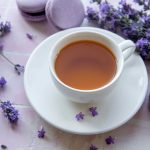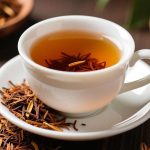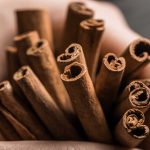Now that you’ve considered the foundational elements of flavour and aroma. it’s time to consider how your brewing technique can either enhance or detract from your carefully crafted tea. The perfect blend can be easily ruined by improper brewing, so let’s delve into the critical factors that determine the flavour profile of your tea.
Focus on Mouthfeel and Texture
Flavour is not just about taste—it’s also about how the tea feels in your mouth. Some teas are velvety and smooth, while others have a crisp, clean finish. Texture can influence how we perceive flavour.
- Smooth and Velvety: Oolong and white teas often have a silky, smooth texture.
- Light and Crisp: Green teas, especially Japanese varieties, have a clean, fresh finish.
- Full-bodied and Robust: Black teas like Assam and Ceylon provide a rich, hearty mouthfeel.
Tip: Control mouthfeel by adjusting brewing time, temperature, and water quality. Hard water can make tea taste flat, while soft water enhances texture.
Brew for Perfection
The way tea is brewed has a direct impact on its flavour profile. Factors like water temperature, steeping time, and tea-to-water ratio all affect the final taste.
- Water Temperature: Black teas require higher temperatures (90-100°C), while green and white teas need lower temperatures (70-85°C) to avoid bitterness.
- Steeping Time: Over-steeping can release excessive tannins, leading to bitterness. Follow recommended steep times for each tea type.
- Water Quality: Use filtered water to avoid any mineral or chlorine interference with the tea’s natural flavour.
Tip: Create a “tasting journal” and document how brewing parameters affect flavour. Adjust one variable at a time until you achieve the perfect cup.
Test, Refine, and Repeat
Developing a signature flavour profile takes time and patience. Test your tea under different conditions, gather feedback, and refine it until it’s just right. Create several batches, compare them side by side, and take notes on which characteristics stand out.
- Sensory Evaluation: Evaluate aroma, taste, texture, and aftertaste. Does it leave a pleasant finish, or is there a lingering bitterness?
- Blind Tasting: Have others taste your tea blend without knowing its ingredients. Their unbiased feedback will help you identify what’s working and what’s not.
Tip: Document every blend you create, noting the ingredients, steeping time, and taste outcomes. This makes it easier to recreate successful blends in the future.
Developing the flavour profile in tea is an immersive process that blends science, craftsmanship, and creativity. From selecting a high-quality base tea to balancing flavours, aromas, and textures, every decision you make will influence the final result. By understanding how taste, aroma, and mouthfeel work together, you can create a tea experience that’s truly unique. Whether you’re crafting a new blend for a brand or simply looking to deepen your appreciation of tea, mastering the art of flavour development is a journey worth taking. So, grab your tea leaves, experiment with infusions, and discover the endless possibilities of flavour that await.





